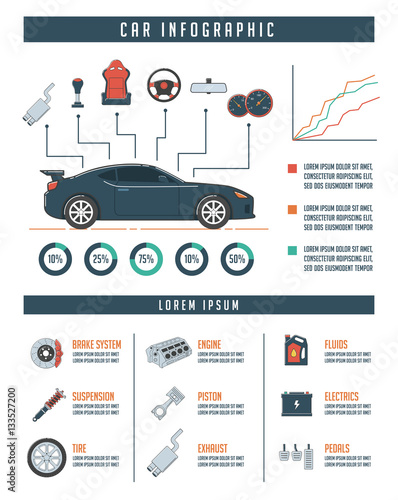Want To Find Out More About The Warning Lights On Your Control Panel? Uncover What They Show Regarding Your Car'S Health And Safety
Want To Find Out More About The Warning Lights On Your Control Panel? Uncover What They Show Regarding Your Car'S Health And Safety
Blog Article
Content Writer-Lim Gilbert
When you're behind the wheel, those beautiful warning lights on your control panel can be a little bit difficult. Do you understand what they're attempting to tell you concerning your vehicle's health and wellness? Understanding the importance of these lights is important for your security and the durability of your vehicle. So, the following time one of those lights turns up, would not you want to understand its message properly and take the necessary actions to address it?
Common Caution Lights and Interpretations
Identify common warning lights in your auto and understand their significances to make sure secure driving.
One of the most typical warning lights consist of the check engine light, which signifies concerns with the engine or discharges system. If this light comes on, it's crucial to have your automobile inspected promptly.
The oil stress warning light shows low oil pressure, needing immediate attention to stop engine damages.
A blinking battery light might suggest a defective billing system, potentially leaving you stranded if not resolved.
The tire pressure monitoring system (TPMS) light alerts you to low tire pressure, influencing vehicle security and gas performance. Neglecting this could bring about unsafe driving conditions.
The abdominal light suggests a trouble with the anti-lock braking system, compromising your ability to stop swiftly in emergencies.
Finally, the coolant temperature advising light warns of engine overheating, which can lead to severe damages if not solved swiftly.
Understanding these common warning lights will certainly aid you deal with concerns promptly and preserve safe driving problems.
Significance of Prompt Interest
Comprehending the usual caution lights in your auto is just the first step; the relevance of promptly dealing with these warnings can't be emphasized sufficient to guarantee your security on the road.
When a warning light brightens on your control panel, it's your vehicle's method of communicating a prospective issue that requires interest. Overlooking these cautions can result in much more severe problems in the future, jeopardizing your safety and security and possibly costing you extra out of commission.
Prompt focus to alerting lights can stop failures and mishaps. For Web Site , a blinking check engine light could show a misfire that, if left ignored, might cause damage to the catalytic converter. Resolving this without delay can save you from a pricey repair.
In a similar way, a brake system advising light could signify reduced brake liquid or used brake pads, vital parts for your security when driving.
DIY Troubleshooting Tips
If you see a caution light on your dashboard, there are a couple of do it yourself troubleshooting pointers you can attempt before seeking specialist aid.
visit this link is to consult your auto's guidebook to understand what the particular caution light indicates. Sometimes the problem can be as easy as a loosened gas cap setting off the check engine light. Tightening up the gas cap may deal with the issue.
Another usual problem is a low battery, which can set off numerous warning lights. Inspecting the battery connections for deterioration and guaranteeing they're safe and secure could deal with the trouble.
If a caution light persists, you can attempt resetting it by separating the auto's battery for a couple of mins and afterwards reconnecting it. In addition, checking your car's fluid degrees, such as oil, coolant, and brake fluid, can help fix advising lights related to these systems.
https://brake-specials-near-me83726.blogunok.com/32339900/exactly-how-mobile-auto-detailing-providers-can-save-you-money-and-time
In conclusion, recognizing your vehicle's warning lights is important for keeping your car running efficiently and securely. By without delay dealing with these signals and knowing what they suggest, you can prevent expensive fixings and possible failures.
Bear in mind to consult your cars and truck's manual for specific information on each alerting light and act appropriately to make sure a hassle-free driving experience.
Keep notified, remain risk-free when driving!
